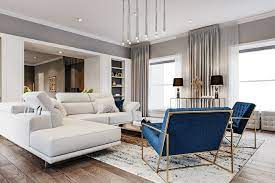
Strategic Spaces: Enhancing Efficiency and Productivity with Commercial Interior Design
Interior design is an art form used to transform spaces. It involves creating beautiful, functional, and comfortable environments. A residential interior designer has a unique challenge of designing spaces that not only reflect the personality of the homeowner, but also match their lifestyle requirements. Hiring an interior designer can be a daunting task; however, with the help of a professional, you can transform your living space into the home of your dreams.
1. Understanding Client Needs and Desires
The artistry of a commercial interior design begins with understanding the client’s requirements. The best designer will take time to listen to the client’s wants, needs, and desires. They will observe the existing space, including the architecture and existing décor. By understanding the client’s vision and what they hope to achieve, an interior designer can transform their space into a unique and personalized environment.
2. Developing a Plan
After understanding the client’s vision, a designer will develop a plan. They will take into account the client’s lifestyle, the existing space, and any parameters that need to be considered, such as budget and timeline. The plan may include furniture selection, color schemes, and other design elements. They will consider how these elements interact with each other, ensuring that they create a cohesive space.
3. Implementing the Plan
Once the plan is finalized, the designer will transform the space, implementing their design elements. This may involve selecting new furniture, sourcing unique accessories, painting walls, or even completely renovating the space. The designer will work with the client to ensure that the space is not only functional but also beautiful. They will work with tradespeople and other professionals to ensure that the design is executed to perfection.
4. Paying Attention to Detail
The artistry of a residential interior designer lies in the little details. They will look at the space holistically, making sure that every design element complements each other. They will work to ensure that the space is not only practical but also aesthetically beautiful. From the selection of lighting fixtures to the choice of throw pillows, every aspect of the room is carefully curated.
5. Creating a Unique and Personalized Space
Finally, the goal of a residential interior designer is to create a unique and personalized space that reflects the client’s personality and lifestyle. The designer will work with the client to ensure that the space tells a story, creating an environment that’s enjoyable to live in. By transforming spaces through their artistry, interior designers can help clients create a space that is both beautiful and functional.
In short
Transforming spaces requires the artistry of a residential interior designer. To create a space that is both functional and beautiful, a designer will work with clients to understand their vision, develop a plan, and implement designs that create a unique and personalized environment. They will pay attention to even the smallest details, creating a cohesive space that reflects the client’s personality and lifestyle. If you’re looking to transform your space, consider hiring a residential interior designer to help turn your dream home into a reality.